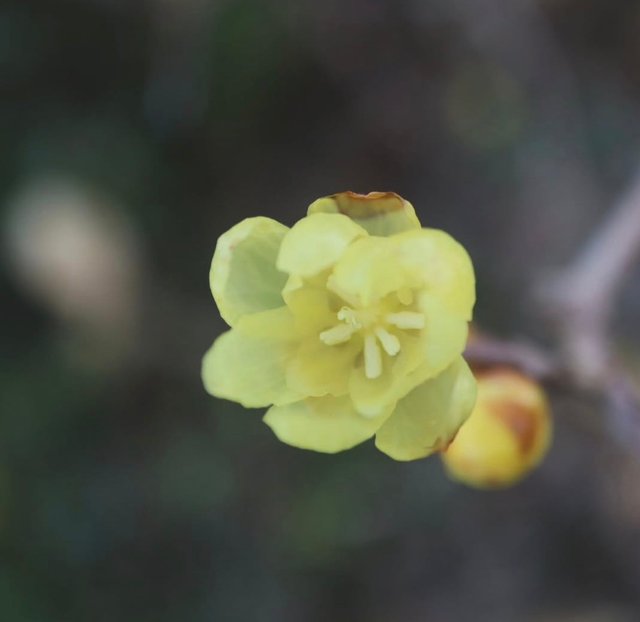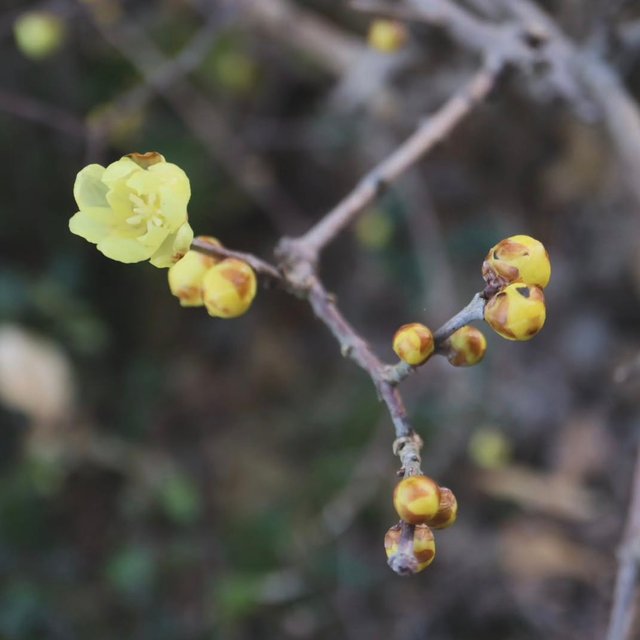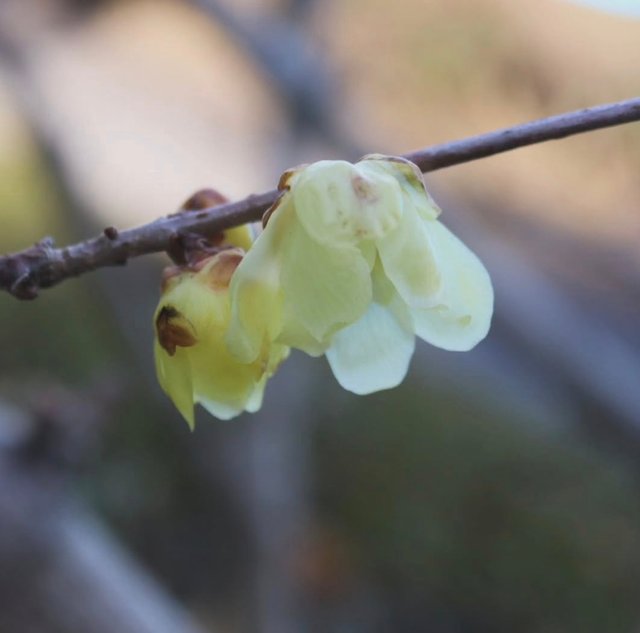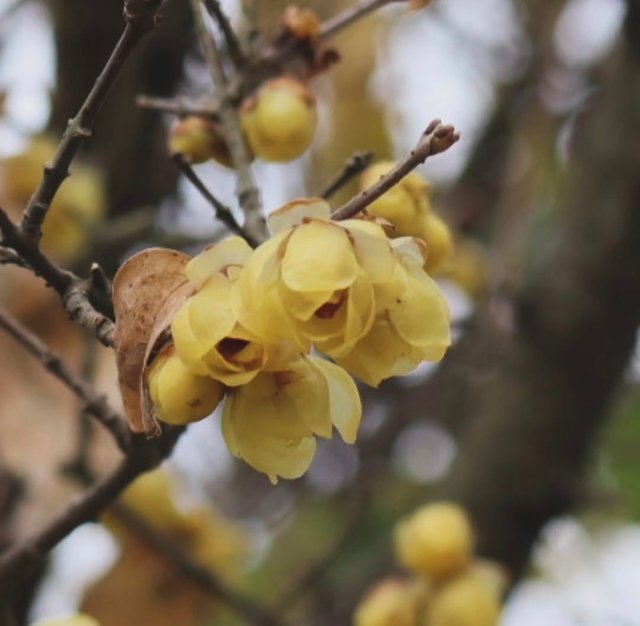



Chimonanthus praecox, commonly known as wintersweet or Japanese allspice, is a remarkable deciduous shrub that graces the winter garden with its fragrant and cheerful blooms. Native to China, this plant has become a favorite among gardeners for its ability to bring life and color to the coldest months of the year.Chimonanthus praecox produces waxy, translucent flowers in shades of pale yellow, often with a maroon or purple center. These blooms appear on bare, leafless branches from late winter to early spring, creating a striking visual contrast against the barren landscape. The flowers emit a sweet, spicy fragrance that can fill the garden or a room when cut and brought indoors.
The shrub typically grows 2–4 meters tall, with a spreading, somewhat open habit. Its dark green foliage emerges in spring and turns yellow in the fall before dropping to reveal its architectural form.This plant thrives in full sun to partial shade, though full sun encourages the best flowering.It prefers well-drained soil but is adaptable to various soil types, including clay or sandy soils.Moderate watering is sufficient; established plants are relatively drought-tolerant.Prune after flowering to shape the plant and encourage new growth. Avoid heavy pruning, as flowers bloom on older wood.
Wintersweet is ideal for a winter garden, adding fragrance and beauty when most plants are dormant. It works well as a specimen plant, in mixed borders, or as part of a shrubbery. The cut branches make excellent additions to floral arrangements, filling indoor spaces with their delightful aroma.In Chinese culture, Chimonanthus praecox is a symbol of resilience and perseverance, blooming despite the harsh winter conditions. It has been cultivated for centuries and often appears in traditional paintings and poetry.If you’re looking to bring life to your winter garden, Chimonanthus praecox is an exceptional choice. Its enchanting fragrance, delicate flowers, and low-maintenance nature make it a must-have for any plant enthusiast.
Gracias
